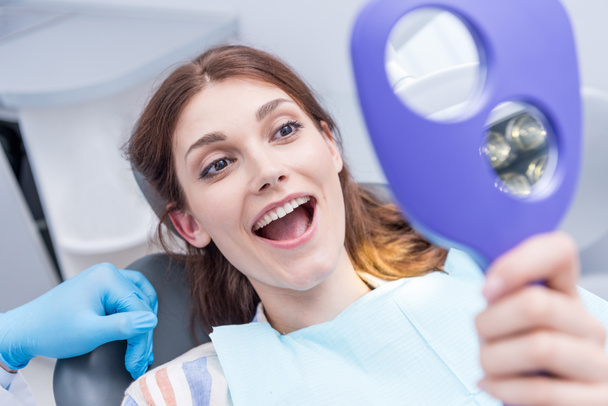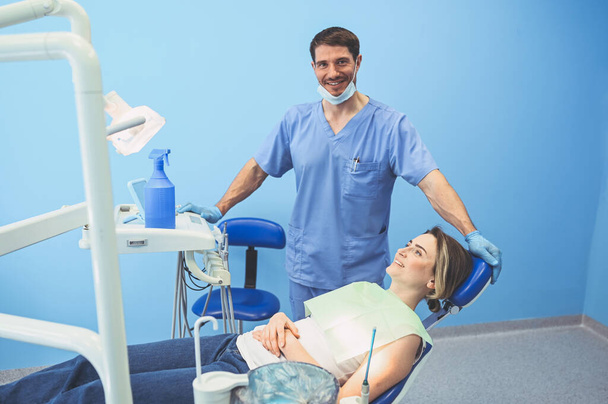Do you ever wonder why dental care in Australia is so expensive?
Well, the answer lies in several key factors. The lack of government funding, high operating costs, and limited competition all contribute to the hefty price tag.
Additionally, the cost of dental technology and the extensive education and training required for dental professionals further drive up the expenses.
In this article, we will delve into these reasons to shed some light on the costly nature of dental care in Australia.
Amidst this landscape of dental challenges, it is encouraging to find affordable and reliable dental services. JC Dental Como in Como, WA, stands out as a beacon for those seeking cost-effective dental solutions without compromising on quality. Their commitment to providing accessible dental care contributes positively to the broader conversation about affordability within the Australian dental landscape.
Key Takeaways
- Lack of government funding for dental care leads to insufficient support and limited access to affordable services.
- High operating costs, including dental insurance coverage, rising overhead expenses, and the need for modern equipment and trained staff contribute to the expensive nature of dental care.
- Limited competition in the dental industry, with a small number of providers dominating the market, leads to monopoly pricing and a lack of transparency in pricing structures.
- Expensive dental technology, such as advanced imaging systems and precision dental instruments, adds to the overall cost of dental care in Australia.
Lack of Government Funding

Lacking government funding contributes to the expensive nature of dental care in Australia. Insufficient support from the government has a significant impact on access to dental care, which ultimately affects the oral health outcomes of the population. According to data from the Australian Institute of Health and Welfare, in 2017-2018, approximately 29% of Australians avoided or delayed dental care due to cost.
This lack of access to affordable dental services can lead to untreated dental problems, resulting in more severe oral health issues in the long run. Without adequate government funding, dental clinics struggle to provide affordable services, which further exacerbates the problem.
Investing in public dental programs and increasing government funding would improve access to dental care and positively impact oral health outcomes for all Australians.
High Operating Costs
Operating costs for dental clinics in Australia are a major factor contributing to the high expense of dental care. The high operating costs can be attributed to several factors:
- Increased demand: With a growing population and a greater awareness of the importance of oral health, the demand for dental services has increased. This has led to a higher need for dental clinics, equipment, and staff, all of which come with additional costs.
- Dental insurance coverage: While dental insurance can help offset the cost of dental care for patients, it also adds to the operating costs for dental clinics. Insurance companies often negotiate lower reimbursement rates for dental services, which can put financial strain on dental clinics.
- Rising overhead expenses: Dental clinics have to cover various overhead expenses, such as rent, utilities, and supplies. These costs have been steadily increasing over the years, further adding to the overall operating costs.
In order to provide quality dental care, dental clinics have to invest in modern equipment, maintain a trained and skilled staff, and cover various other expenses. These factors contribute to the high operating costs and, ultimately, the higher cost of dental care in Australia.
Limited Competition
You may be surprised to learn that limited competition plays a significant role in the high cost of dental care in Australia.
The dental industry in Australia is dominated by a small number of providers, leading to what’s known as monopoly pricing. With little competition to drive prices down, dental clinics can charge higher fees without fear of losing patients to lower-priced alternatives.
This lack of competition also contributes to a lack of transparency in pricing. Patients often struggle to compare prices between different dental clinics, making it difficult to find the most affordable option. Additionally, without competition, there’s less pressure on dental providers to disclose their pricing structures and justify their fees.
These factors result in higher costs for patients seeking dental care in Australia.
Expensive Dental Technology
One major factor contributing to the high cost of dental care in Australia is the utilization of advanced and costly dental technology. Technological advancements in the field of dentistry have led to the development of sophisticated equipment and techniques that improve the accuracy and effectiveness of dental procedures. This advanced technology requires significant research and development, resulting in higher production costs.
Here are three subtopics that highlight the impact of expensive dental technology on the cost of dental care in Australia:
- Cutting-edge imaging systems: Advanced imaging technology such as cone beam computed tomography (CBCT) allows dentists to obtain detailed three-dimensional images of a patient’s teeth and jaw. However, these high-tech imaging systems come with a hefty price tag.
- Precision dental instruments: Technological advancements have also led to the creation of precision dental instruments, such as laser tools and CAD/CAM systems. These tools enhance the precision and efficiency of dental procedures, but their advanced features contribute to the overall cost.
- Digital dentistry: Digital dentistry, including computer-aided design and computer-aided manufacturing (CAD/CAM), has revolutionized dental treatment planning and production of dental restorations. However, the acquisition and maintenance of the necessary hardware and software can be expensive.
The utilization of advanced dental technology in Australia is a significant contributor to the high cost of dental care. While these advancements improve the quality of treatment, they also require substantial investment in research, development, and equipment, ultimately leading to higher dental costs for patients.
Cost of Dental Education and Training
The high cost of dental education and training significantly impacts the overall expense of dental care in Australia. Dental degrees in Australia can be quite expensive, with tuition fees ranging from $50,000 to $100,000 or even more. These high tuition fees are primarily due to the extensive training and education required to become a dentist.
Dental students undergo rigorous coursework, clinical practice, and hands-on training, which are costly to provide. In addition to tuition fees, students also have to cover expenses for textbooks, materials, and equipment. Furthermore, dental schools need to invest in state-of-the-art facilities and faculty members with expertise in the field.
All these factors contribute to the high cost of dental education, which ultimately reflects in the price of dental care in Australia.
Frequently Asked Questions
Are There Any Alternative Funding Options Available for Individuals Who Cannot Afford Expensive Dental Treatments in Australia?
If you can’t afford expensive dental treatments in Australia, there are alternative financing options available. The government provides subsidies for dental care, and you may also consider dental insurance plans or payment plans offered by dental clinics.
How Do the High Operating Costs in Dental Practices Affect the Overall Cost of Dental Treatments for Patients?
Operating costs greatly impact the overall cost of dental treatments for patients. These costs include expenses for expensive dental technologies, maintaining dental practices, and providing financial support for dental students. Additionally, increasing competition further contributes to the high prices.
What Measures Are Being Taken to Increase Competition in the Dental Industry and Potentially Reduce Costs for Patients?
Measures are being taken to increase competition in the dental industry, which could potentially reduce costs for patients. Dental industry funding options are being explored to support affordability and accessibility of dental treatments.
Can You Provide Examples of Expensive Dental Technologies That Contribute to the Overall Cost of Dental Treatments?
Expensive dental technologies, such as advanced imaging systems and computer-aided design and manufacturing equipment, significantly contribute to the overall cost of dental treatments. High operating costs further amplify the impact on dental treatment costs.
Is There Any Financial Assistance or Support Provided to Dental Students to Help Alleviate the High Cost of Dental Education and Training?
Financial aid and scholarships are available to dental students in Australia to help alleviate the high cost of dental education and training. These forms of assistance aim to make dental education more accessible and affordable for aspiring dentists.
